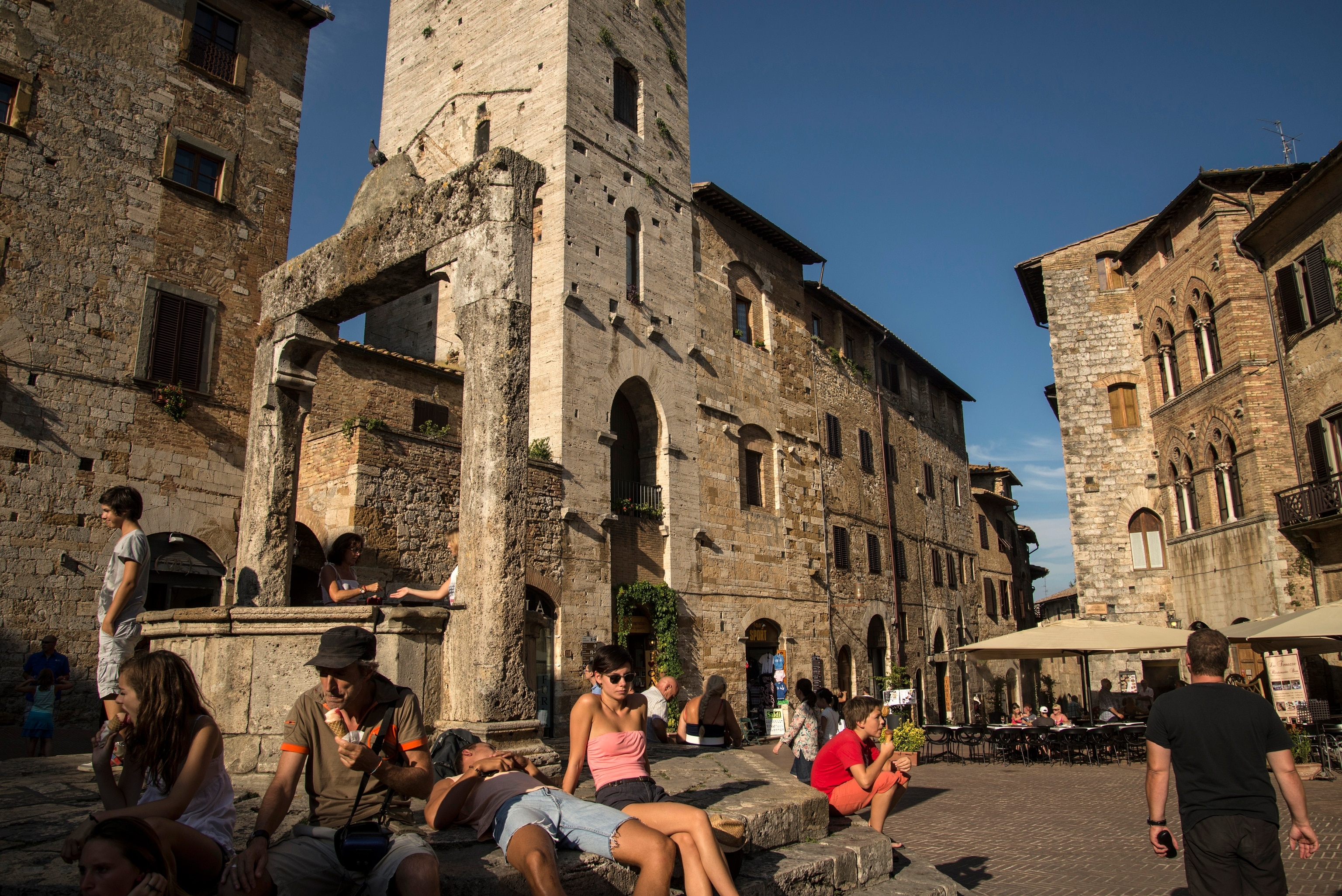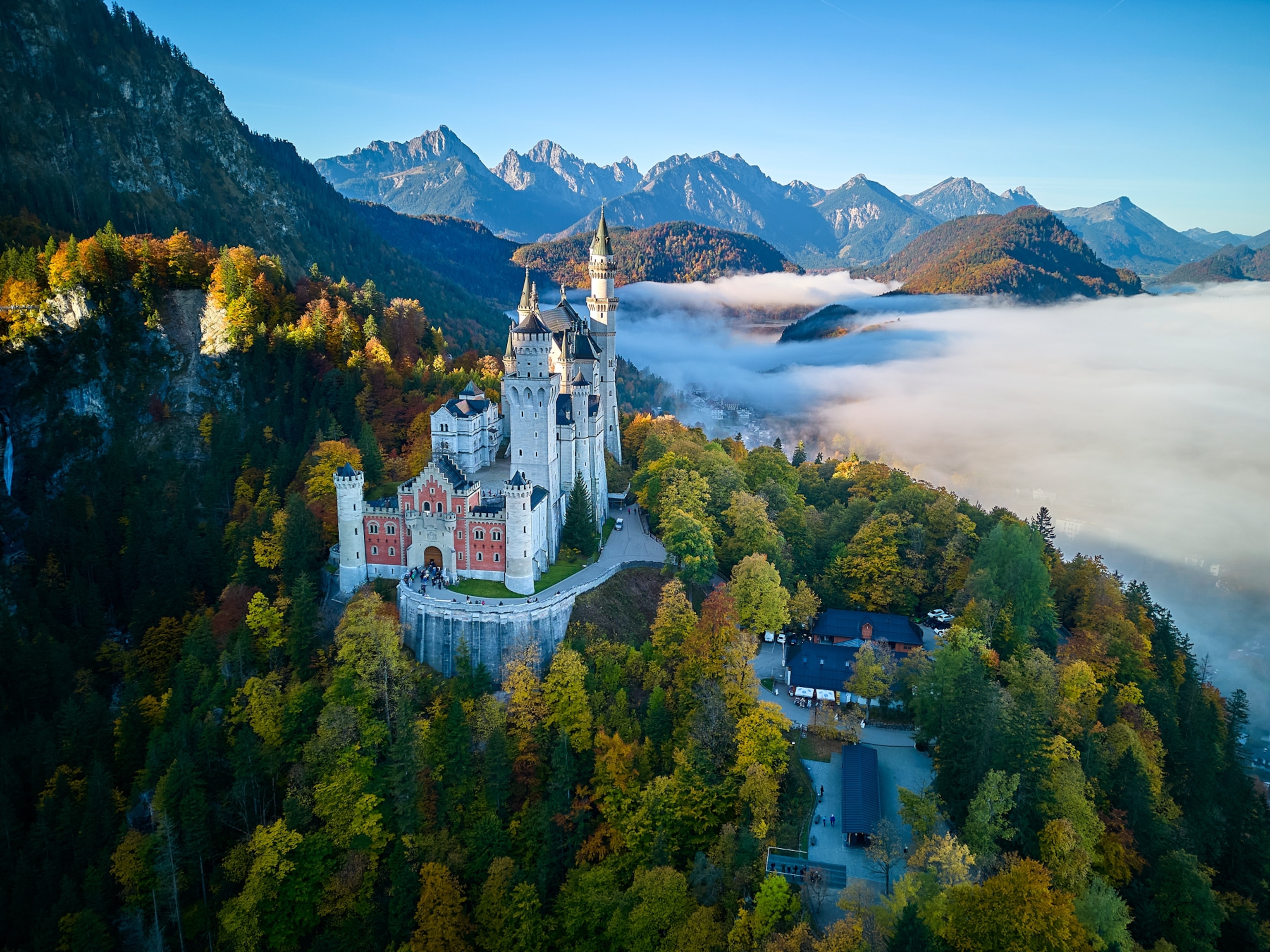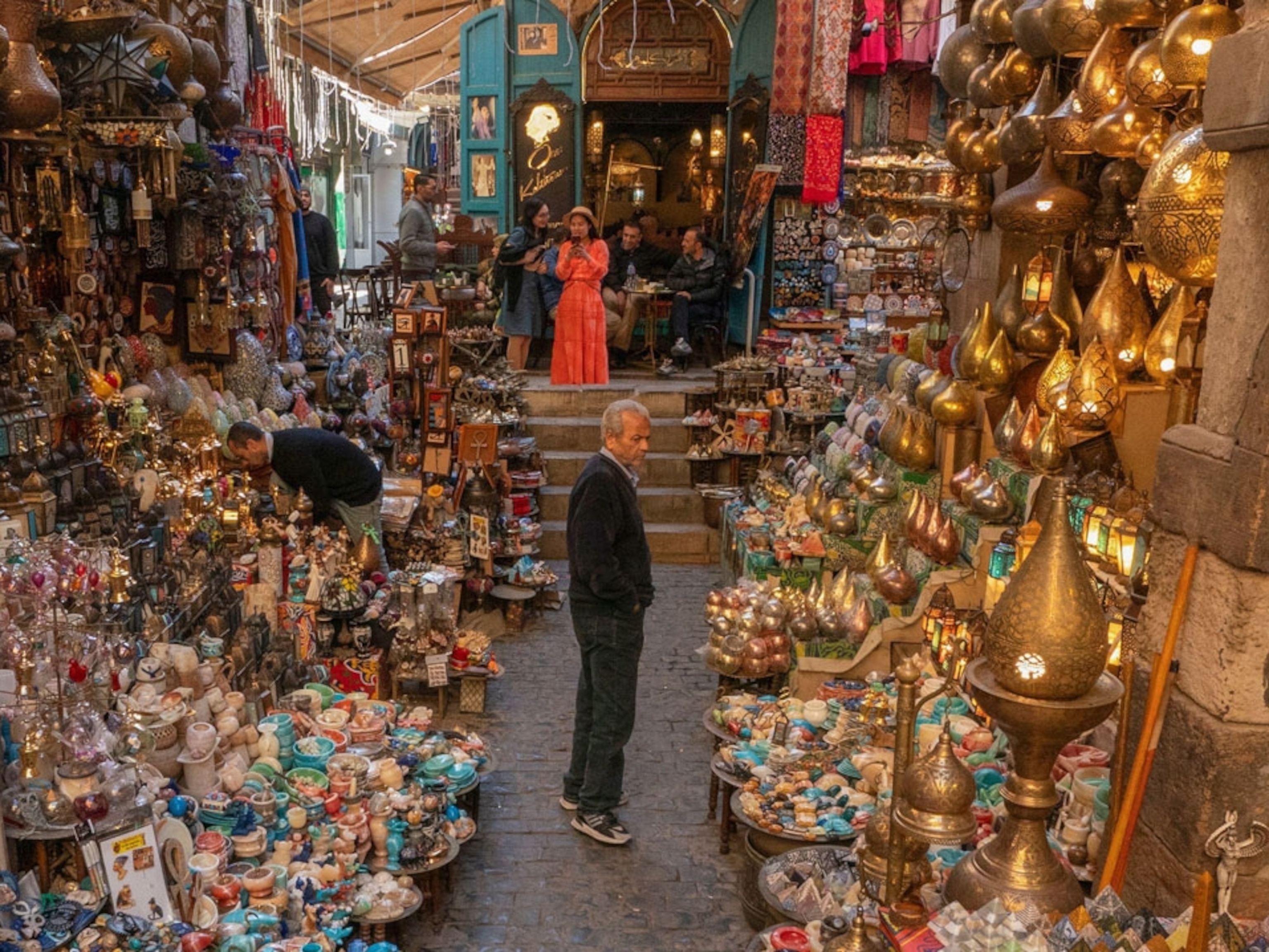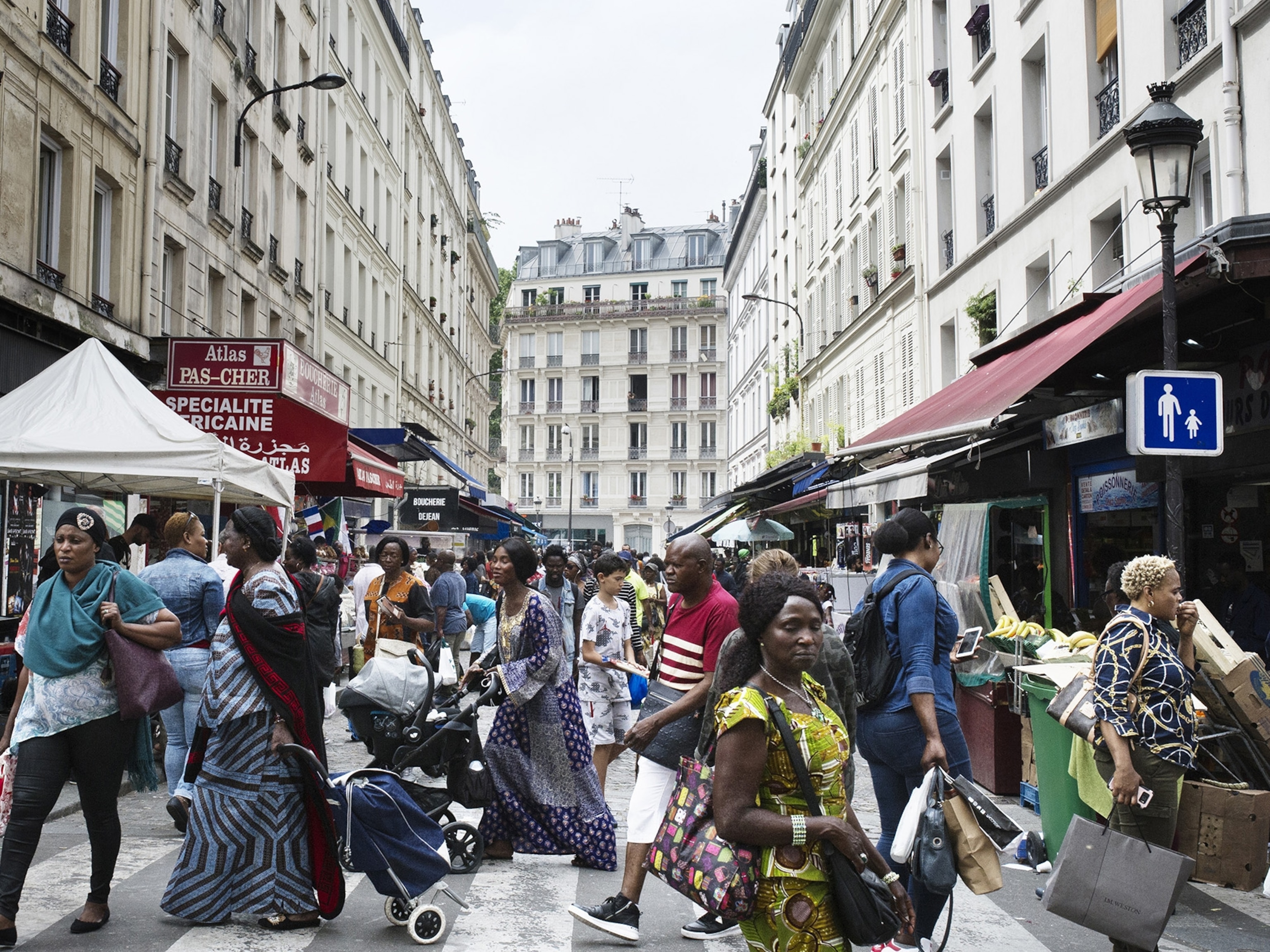6 European villages tell hidden histories, from ruined castles to Tudor inns
Intriguing signs of the past fill throwback towns in Spain, Hungary, and beyond.

According to surveys released by the British tourist board Visit Britain, 11 percent of Americans planning to travel internationally right now are considering a trip to the United Kingdom. More surprising, though, was the fact that 25 percent of those travelers intend to explore Britain beyond London, moved by an interest in history and heritage.
A similar curiosity fuels trips to villages throughout Europe. Forgotten by developers and never annexed into suburbs, many of these places seem suspended in a past age. Scratch the surface of these six villages and what emerges are histories of boom and bust, of places revived and reborn.
San Gimignano, Italy
Best for: Drinking in medieval skyscrapers and white wine.
In medieval times, prominent families of this Tuscan hill town went on a brick tower-building spree. At one point there were more than 70 torres, some soaring to nearly 200 feet. Initially built as defensive anchors in wars with neighboring villages, the towers became symbols of wealth and prestige, with affluent citizens of San Gimignano competing to see who could erect the highest structure. Climb the tallest of the 12 that remain, the 177-foot-high Torre Grossa, and it’s easy to picture how residents might have stood at its apex and dumped scalding water on invaders.
Tucked under the towers in this UNESCO World Heritage site, the Sant’ Agostino church contains a 15th-century fresco displaying the travails of Saint Augustine. A small civic museum with masterworks by Fra Filippo Lippi and other Italian Renaissance artists is another testament to the town’s prosperity.
After 1353, waves of plague and famine battered San Gimignano, leading to both its decline and paving the way for its eventual preservation. Today, the village draws both history buffs and oenophiles with its citrusy white wine, Vernaccia di San Gimignano. Sip and swirl it at an atmospheric tasting center where terraces overlook the surrounding vineyard-strewn hills.

Chambord, France
Best for: Castles plucked from fairytales and glimpses of how French royalty lived.
Few villages are distinguished more by a single architectural masterwork than Chambord, which is also the name of the largest chateau in the Loire Valley, a French Renaissance confection that’s now a UNESCO World Heritage site. The massive project—a royal hunting lodge—was initiated in 1519 under Francois I and took 12 years to complete.
One of the king’s advisors was Leonardo da Vinci, who inspired the castle’s double-helix staircase and likely talked his majesty out of diverting the Loire River to form a moat around the chateau. Inside the 440-room palace, world class tapestries adorn the walls, including a series of 12 representing the months of the year.
To one side of the chateau is a 13,000-acre forest once flush with wild boars and now filled with deer. A recently expanded trail network is open for horseback riding, hiking, or biking.
Though the monumental castle is large enough to qualify as a village itself, a small hamlet just outside the gates grew up to house the landmark’s epic staff. The settlement (population: about 100) still thrives off its link to the chateau, with shops selling local honey and restaurants with vistas of the castle’s delicate spires.

Visegrád, Hungary
Best for: Danube views and the majestic arts of a former Central European capital.
Located 25 miles north of Budapest on a bend of the Danube River, tiny Visegrád was the royal seat of Hungary in the 14th century. It’s rich with royal ruins, including the 13th-century Upper Castle, built as a fortification after a Mongol invasion, and a Gothic palace which was the official residence of the Hungarian king in the early 15th century.
Between May and October, you can reach Visegrád like the early kings did, via a boat from Budapest. It’s often part of daylong “Danube Bend” cruises that stop here and in the historic villages of Szentendre and Esztergom.
Exhibits within the castle rooms cover heraldry, early kitchen arts, and a daring 1440 theft of a royal crown by a chambermaid. Each July, a medieval festival brings costumed jugglers, musicians, and puppeteers to the palace grounds.

Casares, Spain
Best for: Sun-washed days and an immersion into Andalusia’s tumultuous history.
The white villages of Andalusia crown the hill tops of southern Spain like spectral hamlets. Their bleached effect wasn’t only an aesthetic choice. When the area was hit by plagues from the 16th-19th centuries, the houses were white washed with slaked lime as a form of protection.
One of the most ethereal of the villages is Casares, named for Julius Caesar, who was fighting for control of the area in the 1st century B.C. Like many hamlets in Andalusia, Casares was under Moorish rule from the eighth through 15th centuries; signs of its layered past include the Moorish castle capping the town and, just outside the village, the ruins of Lacipo, a Roman settlement.
The village is a tranquil haven now, dotted with small guesthouses, tapas bars, and an 18th-century church.

Les Baux-de-Provence, France
Best for: Haunting ruins, models of chivalry, and dazzling contemporary art.
You can explore two villages in one at this charmer in French Provence. A medieval town crawls up the base of a craggy hill, distinguished by steep cobbled streets and stone mansions once occupied by the powerful lords of Les Baux. Climb up to the top of the hill, where the ruins of an earlier 11th-century village (known as the ville morte, or dead city) offers sublime views.
The Baux princes were renowned for their codes of chivalry, but they frequently clashed with the kings of France, who eventually razed the original hilltop castle in the 17th century. Centuries of decline followed before mid-20th century artists rediscovered and revived the town. Chief among them was engraver and writer Louis Jou, whose studio is now a small museum.
Today, there are art exhibitions and summertime concerts in both zones of town, including video works projected on the walls of a defunct quarry.

Lavenham, England
Best for: Medieval English history and a perfectly preserved merchant’s town.
Like many villages in East Anglia and the Cotswolds, Lavenham bustled with trade during the 15th and 16th centuries. Its powerful wool merchants—renowned for their “blew” broadcloth—built half-timbered houses, many washed in pastel hues like rose and apricot. When the wool trade went bust during Henry VIII’s wars with France, Lavenham was frozen in place, too poor to raise the funds in new development.
Revitalization came thanks to the railroad in the 19th and 20th centuries, and it’s now a popular weekend trip from London or nearby Cambridge.
Other signs of Lavenham’s stint as one of England’s richest villages include a 1529 Guildhall and the 15th-century church of St. Peter and St. Paul. The latter is famous for its 141-foot-tall tower, built to flaunt the town’s wealth.
To see how the swells lived centuries ago, visit the 14th-century Little Hall house museum or book a room at the Swan, a restored and expanded 15th-century hotel with suites among chink and mortar walls and a high tea starring Welsh rarebit and sweet-savory Suffolk chutney.








